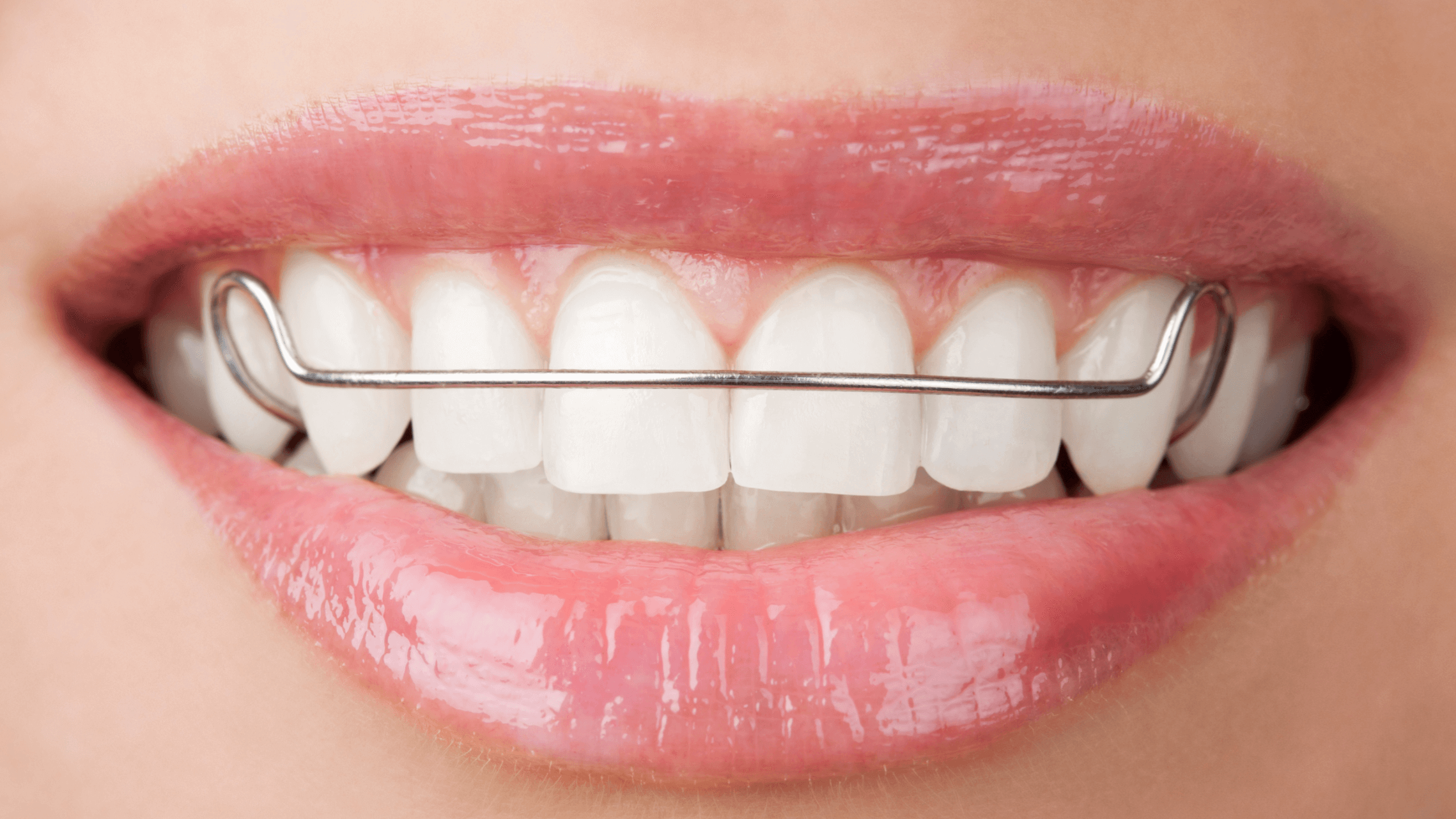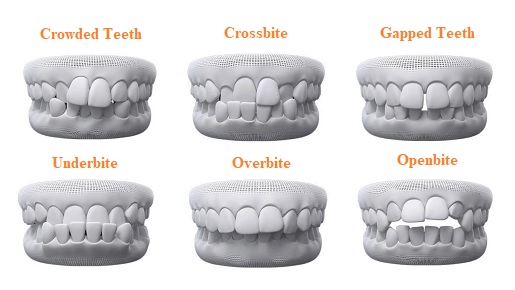How Invisalign Functions: Your Guide to Clear Aligners and Their Effectiveness
How Invisalign Functions: Your Guide to Clear Aligners and Their Effectiveness
Blog Article
Invisalign vs. Standard Dental braces: Which Alternative Is Right for You?
When thinking about orthodontic treatment, the option in between Invisalign and traditional braces provides numerous important elements that merit cautious examination. Invisalign offers a discreet option with detachable aligners, while typical dental braces give a more visible yet reliable remedy for extreme imbalance. Each alternative incorporates distinctive advantages and drawbacks associated with visual appeals, comfort, treatment duration, and price. Understanding these nuances is essential for making a notified decision that aligns with your individual choices and lifestyle. The question remains: which alternative will ideal fulfill your orthodontic requirements and assumptions?
Review of Therapy Alternatives
&srotate=0)
In contrast, typical braces include steel braces and cords that are bonded to the teeth. This technique applies constant stress with time to achieve positioning. While reliable for complex orthodontic concerns, traditional dental braces call for normal sees for changes and can pose difficulties in keeping oral hygiene because of the problem of cleansing about brackets and cables.
Both alternatives have their merits, and the choice typically rests on details dental conditions, lifestyle preferences, and client compliance. Eventually, getting in touch with an orthodontic professional is important for figuring out one of the most ideal therapy strategy tailored to specific demands. Understanding the subtleties of each alternative can significantly influence the total success of orthodontic therapy.
Aesthetic Considerations
A significant factor affecting the selection in between Invisalign and standard dental braces is the aesthetic charm each treatment supplies. Invisalign aligners are crafted from clear plastic, making them practically unnoticeable when put on. This discreet appearance is especially appealing to adults and teens that might feel self-conscious about their orthodontic treatment. The capacity to keep a natural smile throughout the alignment procedure can dramatically boost the person's self-confidence in social and expert setups.
On the other hand, traditional dental braces consist of steel brackets and cables, which can be a lot more obvious. While advancements in orthodontic modern technology have brought about the development of smaller brackets and tinted elastics, conventional dental braces still maintain an even more obvious profile. For some people, the visibility of dental braces might discourage them from looking for necessary therapy.
Eventually, the selection between Invisalign and standard dental braces may pivot on personal choices regarding aesthetic appeals. People who prioritize discernment frequently favor Invisalign, while those who are less worried about exposure might choose standard braces. Comprehending the visual implications of each choice is vital for making an educated decision that lines up with one's way of living and choices.
Comfort and Convenience

In terms of benefit, Invisalign aligners are detachable, enabling people to appreciate their favored foods without limitation and maintain optimum oral health. Cleaning and flossing are simplified, as the aligners can be obtained throughout these routines, whereas typical dental braces require cautious maneuvering around wires and braces.
Furthermore, Invisalign's progressive system permits fewer orthodontic sees. Clients generally get multiple collections of aligners at the same time, which can streamline the therapy process and reduce time invested in the orthodontist's chair. On the other hand, standard braces require regular changes, making them less hassle-free for those with hectic timetables. Invisalign. Generally, the convenience and benefit of Invisalign make it an enticing option for several individuals looking for orthodontic treatment.
Treatment Duration and Efficiency
While both Invisalign and traditional braces work in dealing with dental misalignments, the period of therapy can vary substantially in between both options. Normally, Invisalign treatment can take anywhere from 12 to 18 months, depending upon the intricacy of the case. The clear aligners function by slowly moving teeth right into their preferred positions, and regular follow-ups with an orthodontist assistance guarantee progression continues to be on track.
On the other hand, conventional dental braces usually require a longer dedication, usually ranging from 18 months to three years. This is due to their fixed nature and the use of wires and brackets, which can be a lot more efficient for complicated situations and serious imbalances (Invisalign). The visite site therapy efficiency of conventional braces is well-documented, as they allow for precise adjustments and better control over tooth movement
Ultimately, the selection in between Invisalign and standard dental braces may hinge on both the anticipated therapy period and the details oral problems at hand. Consulting with an orthodontist is essential, as they can offer tailored referrals based upon specific requirements, making sure the chosen method straightens with preferred results and timeframes.
Expense Comparison and Insurance Alternatives
Expense plays a considerable role in the decision-making procedure for people thinking about orthodontic therapy, whether going with Invisalign or conventional braces. Usually, the expense of Invisalign arrays from $3,000 to $8,000, while standard dental braces generally cost between $2,000 and $6,000. Factors influencing these costs consist of the complexity of the situation, the period of therapy, and geographical location.
Numerous oral insurance coverage strategies provide partial protection for orthodontic therapies, yet the specifics can vary widely. Normally, typical braces might be extra regularly covered by insurance plans compared to Invisalign, which some insurance companies classify as an aesthetic procedure.
Furthermore, a number of orthodontic methods supply adaptable payment plans, making both treatment choices more easily accessible. Individuals need to make inquiries concerning potential funding alternatives and discount rates for in advance settlements. Reviewing the complete expense, including insurance coverage advantages and repayment strategies, is essential for making an informed choice that straightens with both visual preferences and budget plan considerations.

Verdict
In recap, the selection in between Invisalign and standard dental braces depends upon several aspects, consisting of visual preferences, comfort, therapy period, and expense. Invisalign provides a discreet, detachable option that facilitates dental health and dietary flexibility, while traditional dental braces might be sites preferable for complex oral concerns and typically come at a reduced cost point. Ultimately, appointment with an orthodontist is essential to examine specific conditions and figure out the most suitable therapy choice for achieving optimum dental placement.
When considering orthodontic therapy, the option in between Invisalign and standard braces offers a number of important variables that merit mindful assessment.Contrasting Invisalign and standard braces exposes distinct therapy alternatives for orthodontic correction.While both Invisalign and traditional braces are effective in remedying dental misalignments, the duration of treatment can differ significantly in between the 2 alternatives.Expense plays a significant function in the decision-making procedure for individuals thinking about orthodontic treatment, whether choosing for Invisalign or Read Full Article typical braces.In summary, the choice in between Invisalign and traditional braces pivots on multiple elements, consisting of aesthetic preferences, comfort, therapy duration, and expense.
Report this page